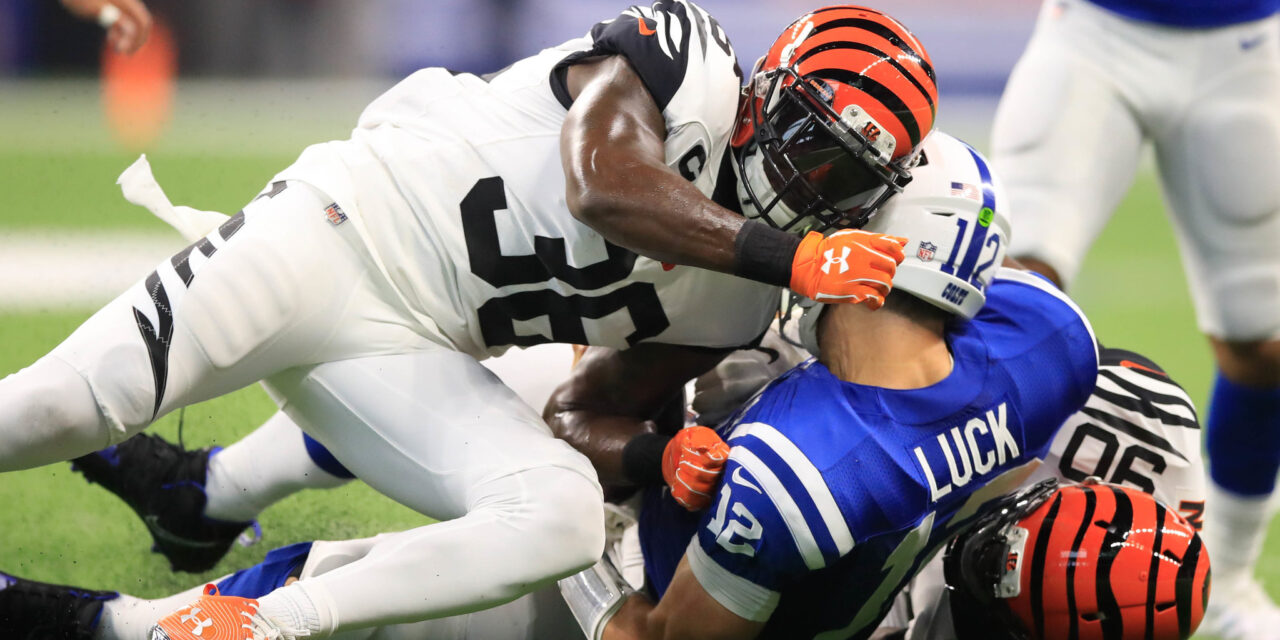Football is a game where size and aggressiveness shine. There is no if, ands, or buts about it. Many experts believe that weight limits build a false sense of confidence in young players leading to potentially disastrous results later on when they progress to playing at a level where there are no weight restrictions. The superstars in weight restricted leagues are playing under risky pretenses. Learning the game in an unrestricted weight environment allows players to adapt naturally to the game, learn the honest traits of each position, and be shuffled into roles that are a natural fit for their size, weight, and ability. Leagues with unrestricted weight classes are safe. There are numerous scientific studies including one done by the prestigious Mayo clinic that show lighter players are not more at risk of getting injured than heavier ones.
There is no existing evidence that unlimited classes are riskier than weighted classes.
There is a compelling scientific Youth Football study by the Mayo Clinic that addresses this issue thoroughly. The Mayo clinic has a stellar reputation in the medical community. Their methodology, statistics, data collection techniques, and attention to detail are second to none. The Mayo Clinic study of a large youth football league was based on 915 players ages 9 to 13 in grades 4 through 8. All of the teams were grouped by grade. Weight categories were not used.
The critical findings were as follows:
A total of 55 injuries occurred during games for the entire season for an incident rate of 5.97 percent. Most injuries were minor with most being bruise/contusions which accounted for 60 percent of total injuries. Seven percent of total injuries were bad enough to prevent players from participating for the rest of the season; all of these were ankle fractures. The risk of injury for an 8th grader was four times the risk of injury for a 4th grader. Therefore, the number one risk factor for injury is age. The higher the age, the higher the chance of injury and as a result, correct age groupings are critical to limiting injuries. To the surprise of many, heavier players sustained more injuries than light players. Therefore, specific weight groupings would not appear to protect lighter players.
How do other experts interpret data from this study?
Dr. Jeff Webb, an affiliate of the prestigious American Sports Medicine Institute offered the following comments on the Mayo Clinic study:
As to why lighter players are not injured more frequently than heavier players, he cited the old formula: force = mass x velocity. He stated that older players get hurt much more often because they run faster and hit harder. Youth players who are larger don’t necessarily impact with more force if they aren’t fast and strong. The number one determining factor of speed and strength is age maturity, not weight. He concluded that lighter players would likely be safe within their own age group.
It is important to note that neither 6th/7th graders, junior varsity, high school, college, nor pros find it necessary to divide by weight classes. Could you imagine the outrage if these groups were told that they needed to move towards weight classes? If 6th/7th graders and 8th/9th grade junior varsity teams are not required to have weight categories for safety purposes, why should they be forced on the same age groups in non-scholastic youth football? And why should the age groups under 6th grade have weight categories forced on them since very few injuries actually occur in these age groups, according to the Mayo Clinic study?
There are other reasons why unlimited classes are superior to weighted classes:
Many communities are too small to draw enough participants to field teams if restrictive weight categories are used.
There is an obesity epidemic in this country and too many kids who are overweight may have to sit out and not get much needed exercise resulting in health problems down the road.
Specific weight categories may force youth to drop weight in order to make the weight category and the result can be very unhealthy and even dangerous resulting in increased liability potential. One popular technique for dropping weight involves limiting the intake of fluids. This can lead to dehydration which is the number one cause of heat illness.
Weight categories that allow younger/heavier players to move up to an older age group can place the younger heavier athlete at increased risk of injury since the primary injury factors are age related based on speed and strength.
Weight categories that allow older/lighter to move down to a younger age group can place the younger age group participants at a greater risk due to the greater age related speed and strength of the older player.
Both American Youth Football and Pop Warner Football, the two largest youth football organizations in the U.S., offer unlimited weight classes. Therefore, a standard has been set for their acceptability. A study of injuries occurring from 2009 to 2011 in American Youth Football, Inc. indicates that the risks of injuries to lighter players is about the same in the weighted (age groups and maximum weights for all players), modified (age groups and maximum weights for ball carriers only), and unlimited (age groups only) divisions. This is the most recent study to shed light on the hotly debated topic within the youth tackle football community on the pros and cons of weighted vs. unlimited divisions. The prior Mayo Clinic Study concluded that the number one predictor of injuries in youth tackle football is age and that weight groups would not appear to protect players. The study found that the risk of injury to an eighth grader was four times the risk of injury to a fourth grader. Therefore, the higher the age, the higher the chance of injury, and as a result, correct age groupings are critical to limiting injuries.
The American Youth Football, Inc. study tracked the progression of injuries to players of various
weight categories through the weighted, modified, and unlimited divisions. The percentage of total injuries to lighter players (both below average and significantly below average) was about the same regardless of the division in which they participated. The percentage of total injuries to below average weight players ranged from 9.25% (weighted) to 11.50% (modified) to 8.96% (unlimited). The percentage of total injuries to significantly below average weight players ranged from 0.00% (weighted) to .30% (modified) to .71% (unlimited).
See the full version of American Youth Football study on injuries to lighter players in weighted vs modified vs unlimited divisions.
Parents who have players in unlimited classes can rest assured that there is no scientific basis to suggest that they are riskier than weighted classes. Age groupings and not weight groupings are the best predictor for injuries and safety in youth football.





Recent Comments